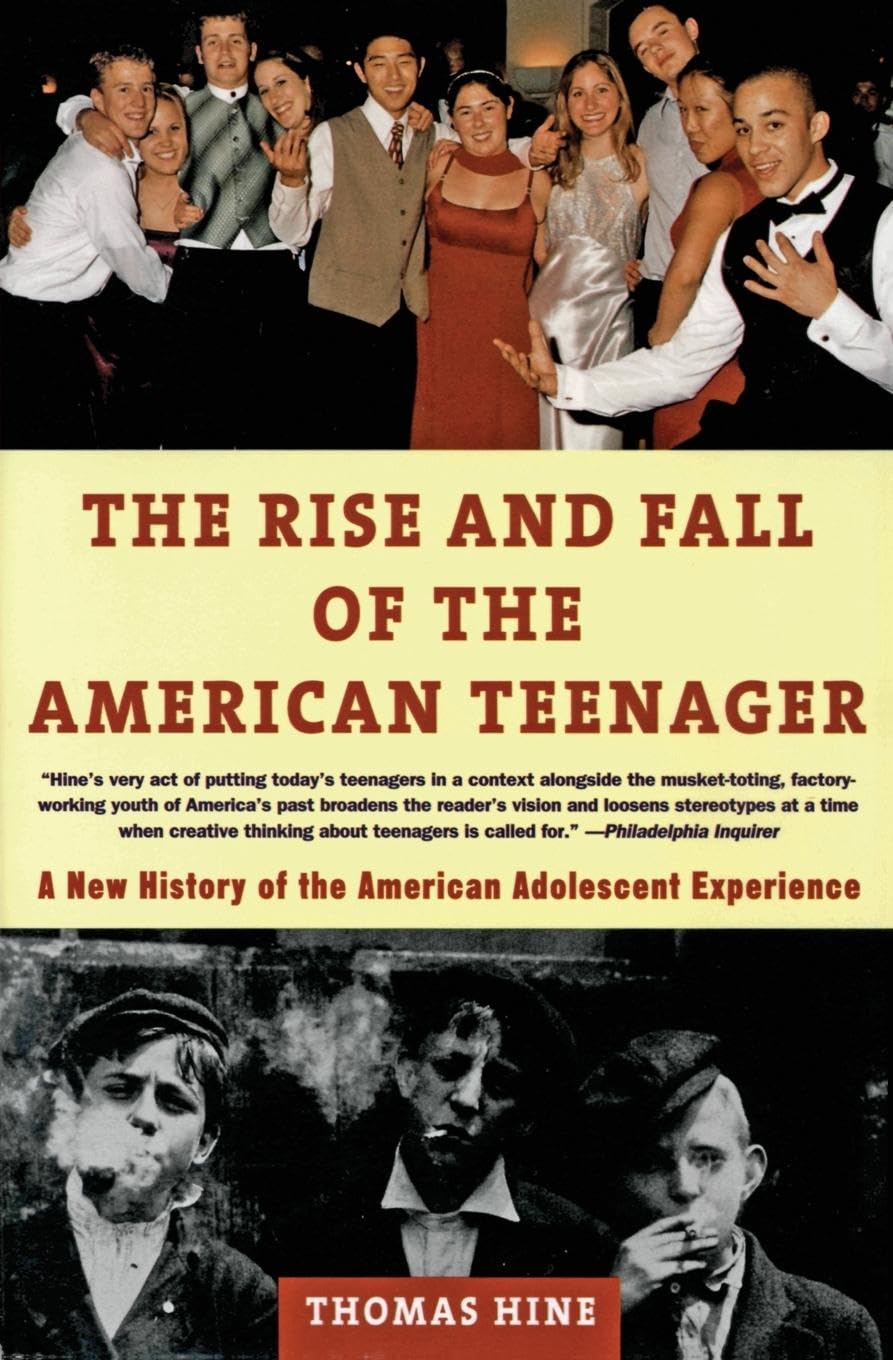

Full description not available
F**G
Wow.
I could not put this book down once I began reading it.It was entertaining, informative, and really made me question the way teenagers are classified today. The amount of both freedom and responsibility granted to younger adults in earlier generations is amazing in comparison to the idleness and lack of direction granted to them today. I'm fascinated by the evolution of the high school--beginning as an actual *useful* place for building work skills and as a replacement for college and how it has evolved into a glorified babysitting service that regurgitates information. I recommend this book to anyone wanting to learn the varied places of youth in America across history.
B**Y
If you work with teens or young adults, this is a must read
Hine does a great job detailing the major cause of teen culture; that our country has decided that young adults will no longer be allowed to act as young adults. As a result, they're acting like young adults, but without the responsibility that used to characterize young adults. His solution; go back to letting them act like young adults, within bounds. It's not a particularly scholarly work, but Hine does succeed in demonstrating his basic thesis quite well--and not being "scholarly" is a boon in terms of readability.The one fault I see with Hine's work is that he tends to take the "worst view" of teen behavior, assuming that known flawed sources like Kinsey are representative. So if you read his book, you may come out more pessimistic about our world than the data actually suggest should be the case.
N**N
A GREAT read.
This is a GREAT book. Every teenager should read it to understand the cultural and historical importance of teenagers in America.It gave me a whole new perspective and appreciation for what teenagers are capable of.High school used to get a lot of input from the local businesses and kids were encouraged to learn theskills important to that communities business atmosphere. Too bad we decided to set every kid up to go to collegeregardless of where the jobs are.
J**Z
The rise and fall of the American Teenager
In The Rise and Fall of the American Teenager by Thomas Hine we are introduced to the old and modern teenager. Hine uses socialogical, psichological and anthropological data, we realize that it is not always crystal clear. It is a moving historical process, therefore there are many different elements that must be considered when attenting to understand today's dynamic teens. We must keep in mind that we cannot solely view teens through our modern lens, but must be aware of what has come before.In today's job market a high school diploma, and even arguably a college degree, is essential for success.
B**L
Five Stars
Maybe the best book on youth culture I have read. Insightful, intriguing, thought provoking. I digs it.
E**N
Five Stars
I bought this book for my husband and he likes it very much.
J**G
How the Teen Culture Came to Dominate America
Today, because of the massive American youth culture, we take the descriptive term "teenager" for granted. Young people enter their teenager years and seem to become part of another world, children no longer, but not full participants in the adult culture of work and responsibility. At one time, teenagers wanted to grow up rapidly, aspiring to take on the trappings of adulthood as quickly as possible, but today millions of young men and women seem dedicated to hanging on to their youth through their thirties and forties. Because of the pervasiveness of the youth culture, we have forgotten that the concept of a teenager is a social development and a relatively recent one. The idea of the teenager only occurred as America began to achieve relative affluence, when parents - whether farmers or shopkeepers - could afford to have their offspring attend school for a longer time. As these young people began to attend secondary school - and it was only in the 1920's when more than half of our children were educated through high school - and to have more leisure time, the term "teenager" was coined. It was this combination of time and affluence that made the teenager a young consumer to be marketed to. In "The Rise and Fall of the American Teenager" Thomas Hine shows the evolution of the concept of the teenager and the history of American youth culture. He is a professional journalist who writes with a strong narrative drive. He has an eye for detail and is particularly adept at choosing interesting subjects for his books and articles. By following young adults throughout American history, he has shown a light on a subject that has not been illuminated in the same way before.
T**N
Five Stars
Thanks
Trustpilot
1 week ago
2 months ago